Volubilis: The Best Things to See and Do at Morocco's Ancient Roman Ruins
As travellers, we all have a soft spot for ancient ruins. They not only give us a glimpse into history but also showcase impressive feats of engineering and architecture. Volubilis, an ancient Roman city in Morocco, is no exception. Nestled amidst sprawling hills and picturesque landscapes, this UNESCO World Heritage Site boasts some of the most well-preserved Roman ruins in North Africa. From stunning mosaics to towering columns and arches, Volubilis is a treasure trove of ancient wonders waiting to be explored.
In this blog post, we’ll take you on a virtual tour of Volubilis, sharing the best things to see and do at this remarkable site. So fasten your seatbelts, and let’s dive in!
Introduction
A brief overview of Volubilis
Located in Morocco, Volubilis is an ancient Roman ruin that holds a significant historical place and attracts visitors worldwide. Here is a brief overview of the things you can expect to see and do at this remarkable archaeological site:
- Founded by the Berber people in the 3rd century BC, Volubilis became an important settlement in Morocco.
- In 40 AD, the Romans annexed Volubilis, leading to significant growth and development.
- Under Roman rule, the city flourished, constructing impressive public and private buildings.
- Volubilis prospered economically and culturally, serving as a thriving centre for trade and a melting pot of diverse influences.
- Some of the must-see attractions at Volubilis include the Triumphal Arch, a symbol of the city's grandeur and historical significance.
- The Basilica and Forum are other notable sites showcasing the architectural prowess of the ancient Romans.
- When planning your visit, consider transportation options from nearby cities such as Meknes and Fez.
- Both public transport and private tours are available to reach Volubilis.
- Don't forget to check the entrance fees and opening hours before visiting.
- Visiting Volubilis during the morning or late afternoon hours is recommended to avoid the crowds and make the most of your experience.
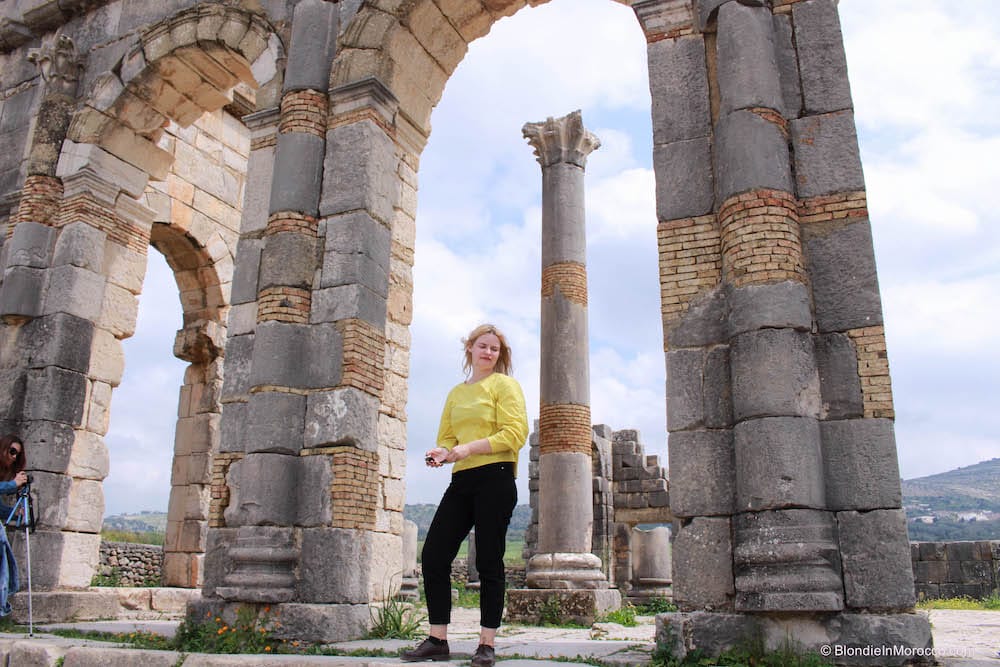
Importance of Volubilis as Ancient Roman Ruins in Morocco
Located in Morocco, Volubilis stands as a testament to the enduring legacy of the ancient Roman empire. This ancient Roman ruins site is important for Morocco and the wider world. Here are some key points that highlight why Volubilis is such a significant historic landmark:
- Historical significance: Volubilis was founded by Berber people in the 3rd century BC before being annexed by the Romans in 40 AD. It was a vital Roman administrative centre and a thriving economic hub.
- Architectural marvel: The ruins of Volubilis exhibit the grandeur and ingenuity of Roman engineering and architecture. The remains of public and private buildings, such as the basilica and forum, showcase the sophistication and cultivation of the ancient civilization.
- Cultural heritage: Volubilis serves as a window into the diverse cultural heritage of Morocco. It represents the fusion of Berber, Roman, and Arab influences, offering visitors a unique insight into the region's varied history and rich cultural tapestry.
From its historical significance to its architectural marvels and cultural heritage, Volubilis is an essential destination for anyone keen to explore Morocco's ancient past.
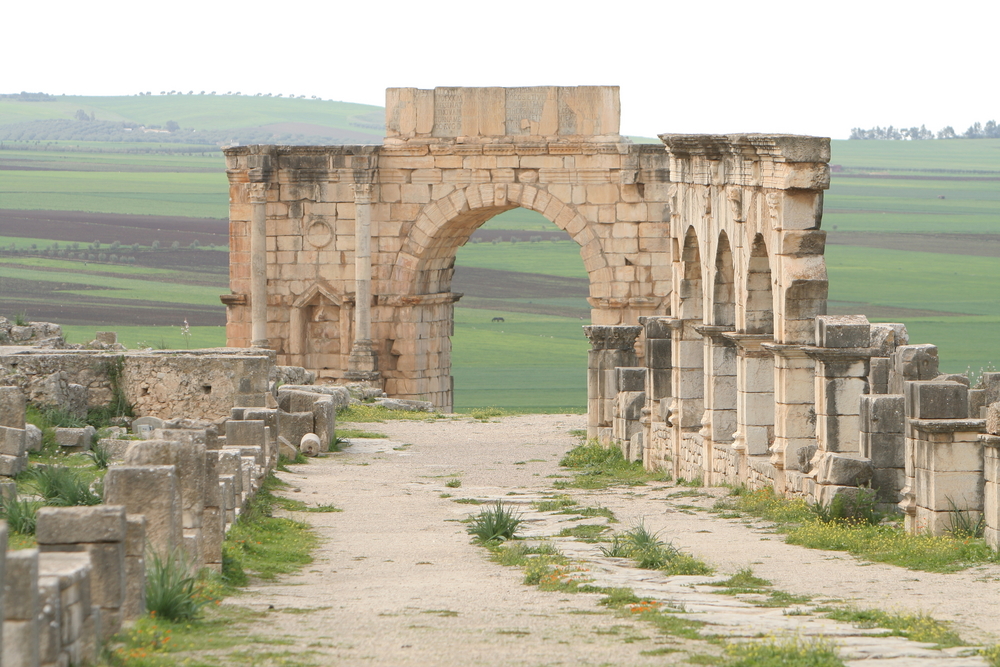
Historical Background
Founding and expansion of Volubilis
When exploring the ancient Roman ruins of Volubilis, it is fascinating to learn about its founding and expansion over time. In the 3rd century BC, the area was settled by the Berber people, who were known for their agricultural skills and trade connections. However, in 40 AD, Volubilis was annexed by the Romans, marking an important turning point in its history.
Under Roman rule, the city flourished and saw significant growth and development. The Romans constructed public and private buildings, transforming Volubilis into a thriving hub of economic prosperity and cultural significance. This blend of Berber and Roman influence makes Volubilis such a unique and intriguing destination to explore today.

1. Settlement by the Berber people in the 3rd century BC
In the 3rd century BC, the ancient city of Volubilis was settled by the Berber people, creating a fascinating historical foundation for the site we see today. Here is a brief overview of this significant milestone in Volubilis' history:
- Berber Settlement: The Berber people, indigenous to North Africa, settled at Volubilis in the 3rd century BC.
- Cultural Influence: The Berber settlement brought their unique culture and traditions to the region, contributing to the rich historical tapestry of the area.
- Trade Hub: Volubilis became an important trade hub, attracting merchants from across the region who sought to exchange goods and ideas with the Berbers.
- Agricultural Advancements: The Berber people utilized the fertile lands surrounding Volubilis for agriculture, cultivating crops such as wheat, olives, and grapes.
- Architectural Developments: The Berbers also built their architectural structures within the settlement, showcasing their craftsmanship and ingenuity.
- Early Significance: The settlement by the Berber people set the stage for the subsequent Roman annexation in 40 AD, which would further shape the history and development of Volubilis.
Overall, the settlement by the Berber people in the 3rd century BC was a pivotal moment in the history of Volubilis, laying the foundation for the eventual flourishing of the ancient city under Roman rule.

2. Roman annexation in 40 AD
One significant event that cannot be overlooked in the history of Volubilis is the Roman annexation in 40 AD. This moment in time marked the incorporation of Volubilis into the Roman Empire, transforming it into a thriving Roman city. Here are key points to consider about the Roman annexation:
- The Roman annexation of Volubilis occurred during the reign of Emperor Claudius.
- It was a strategic move by the Romans to expand their influence and control over the region.
- Volubilis became an important outpost and administrative centre in Roman Africa with the Roman annexation.
- The Romans brought their advanced architecture, infrastructure, and culture to Volubilis, leading to significant development and growth of the city.
- The local population of Volubilis gradually adopted the Roman way of life and architecture, resulting in a blend of Roman and indigenous elements in the city's structures.
Overall, the Roman annexation played a crucial role in shaping the destiny of Volubilis and establishing it as a prominent Roman city in North Africa.
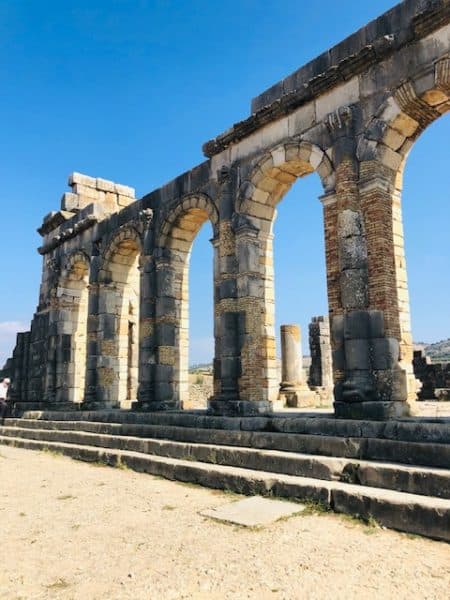
The flourishing of Volubilis under Roman rule
During Roman rule, Volubilis flourished as a centre of economic prosperity and cultural significance. The Romans brought about an era of expansion and development in this ancient city, constructing numerous public and private buildings. These structures served practical functions and showcased the architectural grandeur of the time. The city's economy thrived, making it an important trading hub in the region.
Volubilis also significantly influenced the cultural exchange between the Romans and the local Berber population. The assimilation of Roman customs and traditions enriched the city's cultural landscape, leaving behind a fascinating heritage still visible today.

1. Construction of public and private buildings
When exploring the ancient Roman ruins of Volubilis, one cannot help but be awe-inspired by the construction of the public and private buildings that once stood here. The remnants of this once-thriving city give us a glimpse into the Romans' architectural prowess and dedication to creating grand structures. Some noteworthy points about these buildings include:
-
Public Buildings:
- The basilica and forum were central to Volubilis, serving as the administrative, judicial, and commercial centre of the city.
- These structures were intricately designed with impressive columns, intricate flooring, and beautifully decorated walls.
- The market and Capitol were also situated in this area and played a crucial role in the city's economic prosperity.
-
Private Buildings:
- Volubilis was dotted with luxurious houses, displaying the wealth and opulence of its inhabitants.
- These residences featured courtyards, multi-levels, and beautiful mosaics, showcasing the lifestyle and taste of the elite.
As you wander through the ruins, you can't help but imagine the vibrant life that once filled these majestic structures. It's truly a testament to the architectural skills of the Romans and a reminder of the historical significance of Volubilis.
2. Economic prosperity and cultural significance
During its Roman heyday, Volubilis experienced a period of remarkable economic prosperity and cultural significance, making it a vibrant and thriving city. Here are some key aspects that highlight its importance:
-
Trade: Volubilis served as a significant hub for trade, especially in wheat, olive oil, and wild animals. Its strategic location on major trade routes contributed to its economic growth and prosperity.
-
Agriculture: The fertile lands near Volubilis allowed for the cultivation of various crops, including grains, fruits, and vegetables. The production and export of agricultural products brought wealth to the city and its residents.
-
Crafts and Industry: Artisans in Volubilis displayed impressive skills in pottery, jewellery making, and weaving. These goods were highly sought after and significant in local trade and commerce.
-
Cultural Exchange: As a Roman settlement, Volubilis was influenced by and became a melting pot of different cultures. Romans, Berbers, and other ethnic groups shared their traditions, languages, and customs, leading to a rich and diverse cultural environment.
-
Education and Entertainment: Volubilis boasted schools and theatres, indicating the city's dedication to learning and entertainment. It was a centre for intellectual pursuits and offered its inhabitants opportunities for recreation and enjoyment.
Volubilis's economic prosperity and cultural significance reveal the city's status as an important Roman outpost, contributing to both the growth of the Roman Empire and the development of Moroccan history and culture.
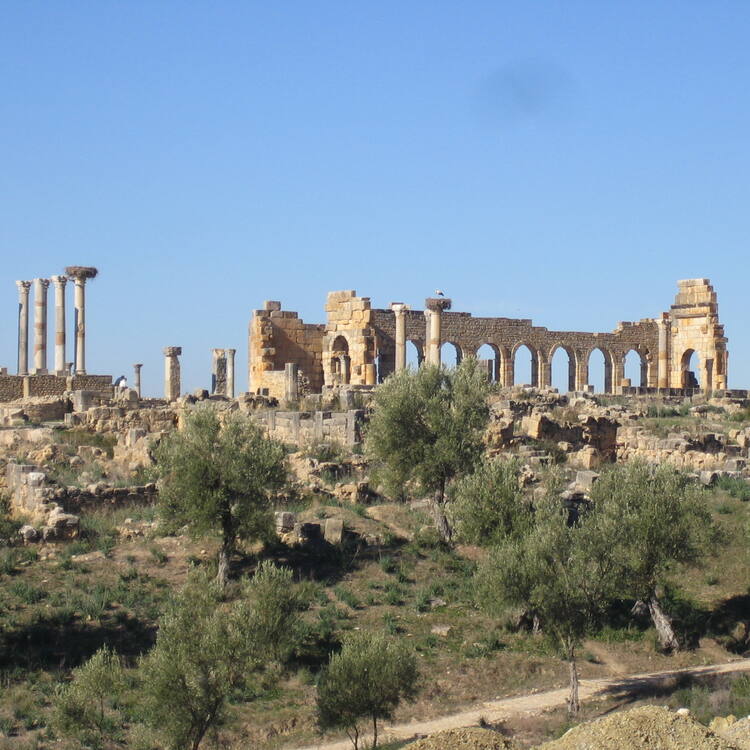
Architectural Highlights
A. Triumphal Arch
When you visit Volubilis, one of the key attractions you shouldn't miss is the Triumphal Arch. This impressive structure holds great historical importance and will leave you in awe. Here's what you need to know about the Triumphal Arch:
- History and Importance: The Triumphal Arch was constructed during the reign of the Roman Emperor Caracalla in the early 3rd century AD. It was built to commemorate victories and achievements in battle. This arch stands as a testament to the Roman influence in Volubilis and showcases the grandeur of their architectural prowess.
As you explore this magnificent site, take a moment to appreciate the intricate carvings and detailed design of the Triumphal Arch. It serves as a gateway to the ancient Roman city and offers a glimpse into the glorious past of Volubilis.
Remember to capture some amazing photos of this iconic structure, encapsulating the essence of this historical site. The Triumphal Arch is just one of the many captivating landmarks that await you at Volubilis, so explore and discover the other wonders of these ancient Roman ruins in Morocco.
History and importance
Volubilis is an ancient Roman city in Morocco with great historical and cultural importance. It was founded in the 3rd century BC by the Berber people, but it didn't achieve its full prominence until it was annexed by the Romans in 40 AD. Under Roman rule, Volubilis flourished, and many public and private buildings were constructed. This prosperity brought economic growth and cultural significance to the city.
Some of the most notable structures in Volubilis include the Triumphal Arch, the Basilica, and the Forum. The Triumphal Arch has a rich history and is of great importance, while the Basilica and Forum played important roles in the city's daily life.
If you are planning a visit to Volubilis, you should keep a few things in mind. First, you must consider transportation options from nearby cities like Meknes and Fez. Second, check the admission cost and operating hours before you go. Finally, try to visit Volubilis at an ideal time, such as spring or fall, when the weather is mild. This will ensure that you have a more enjoyable experience.
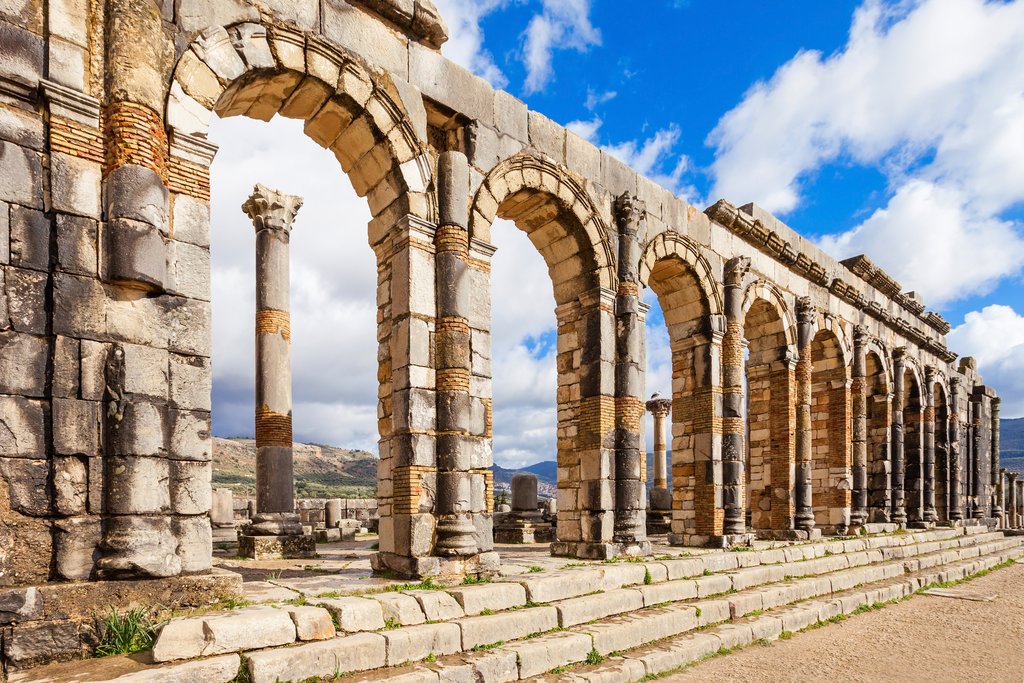
Basilica and Forum
When you visit Volubilis, one of the most important sites to explore is the Basilica and Forum. These ancient structures held great significance during the Roman rule in Volubilis.
The Basilica served as a public building, often used as a courthouse, while the Forum was the lively marketplace and centre of economic activity. Walking through these ruins, you'll sense the bustling atmosphere that once filled these spaces.
Take your time to admire the architectural details and imagine what life was like then. Don't forget to explore the nearby market and Capitol area, which further highlights the importance of commerce in ancient Volubilis.
This is a must-visit section for history enthusiasts and those interested in Roman architecture and culture.
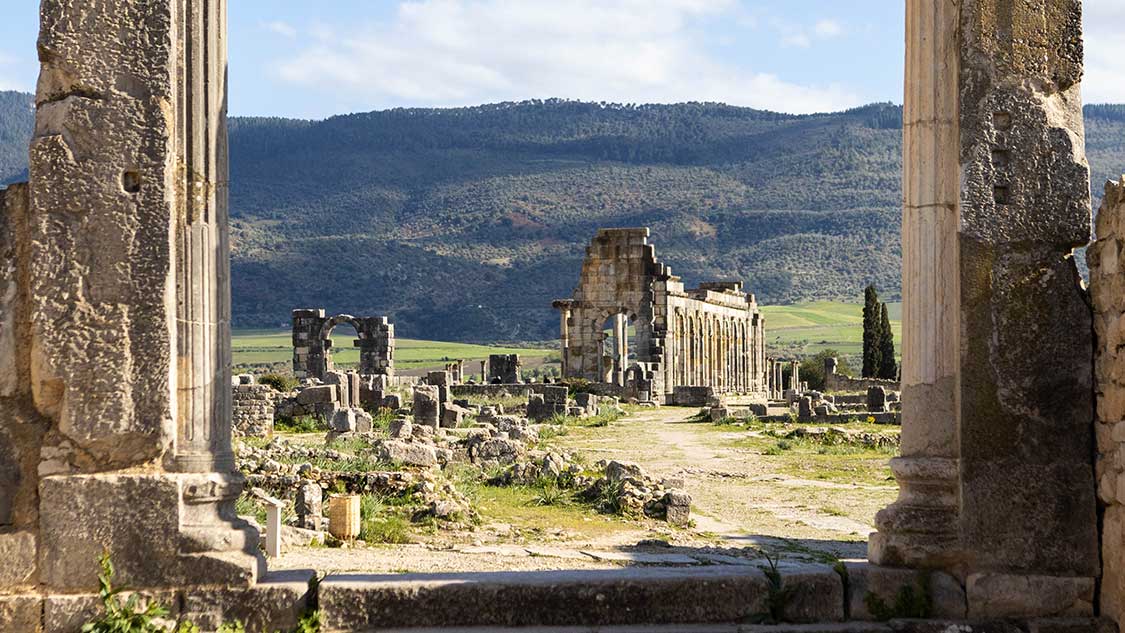
1. Function and significance of the buildings
When exploring the ancient Roman ruins of Volubilis, you will come across the impressive Basilica and Forum. These buildings served important functions during the flourishing period of Volubilis under Roman rule. Here's why they are significant:
-
Basilica: The Basilica was a central meeting place for government and legal affairs. It served as a courthouse, where trials were held, and legal matters were addressed. Additionally, it acted as an administrative centre, providing space for officials to carry out bureaucratic governance tasks.
-
Forum: The Forum was the heart of Volubilis, serving as the main public square and marketplace. It was a bustling hub of commercial activities, where traders and merchants congregated to sell their wares. The Forum also hosted various social and political events, including public speeches and ceremonies.
These buildings played a crucial role in the daily life of Volubilis, showcasing the importance of law, governance, and trade within the Roman Empire. As you walk through the ruins, imagine the lively atmosphere that once thrived in these spaces, offering a glimpse into the historical significance of Volubilis.

2. Market and Capitol in the area
When exploring the ancient Roman ruins of Volubilis, visit the Market and Capitol area. This bustling hub was at the heart of the city's economic and political activities. Here are some highlights to keep in mind:
-
Market: The market at Volubilis was a vibrant centre of commerce where locals would gather to buy and sell goods. It offered various products, including pottery, textiles, and spices. Stroll through the stalls to get a sense of the lively atmosphere that once filled this space.
-
Capitol: The Capitol was a significant political site, functioning as a meeting place for the city council. It housed administrative offices and important government functions. Take a moment to imagine the discussions and decisions that would have taken place within these walls.
The market and Capitol area give you a glimpse into this ancient city's daily life and governance. It's a great opportunity to witness the economic and political vitality that characterized Volubilis during its Roman heyday.
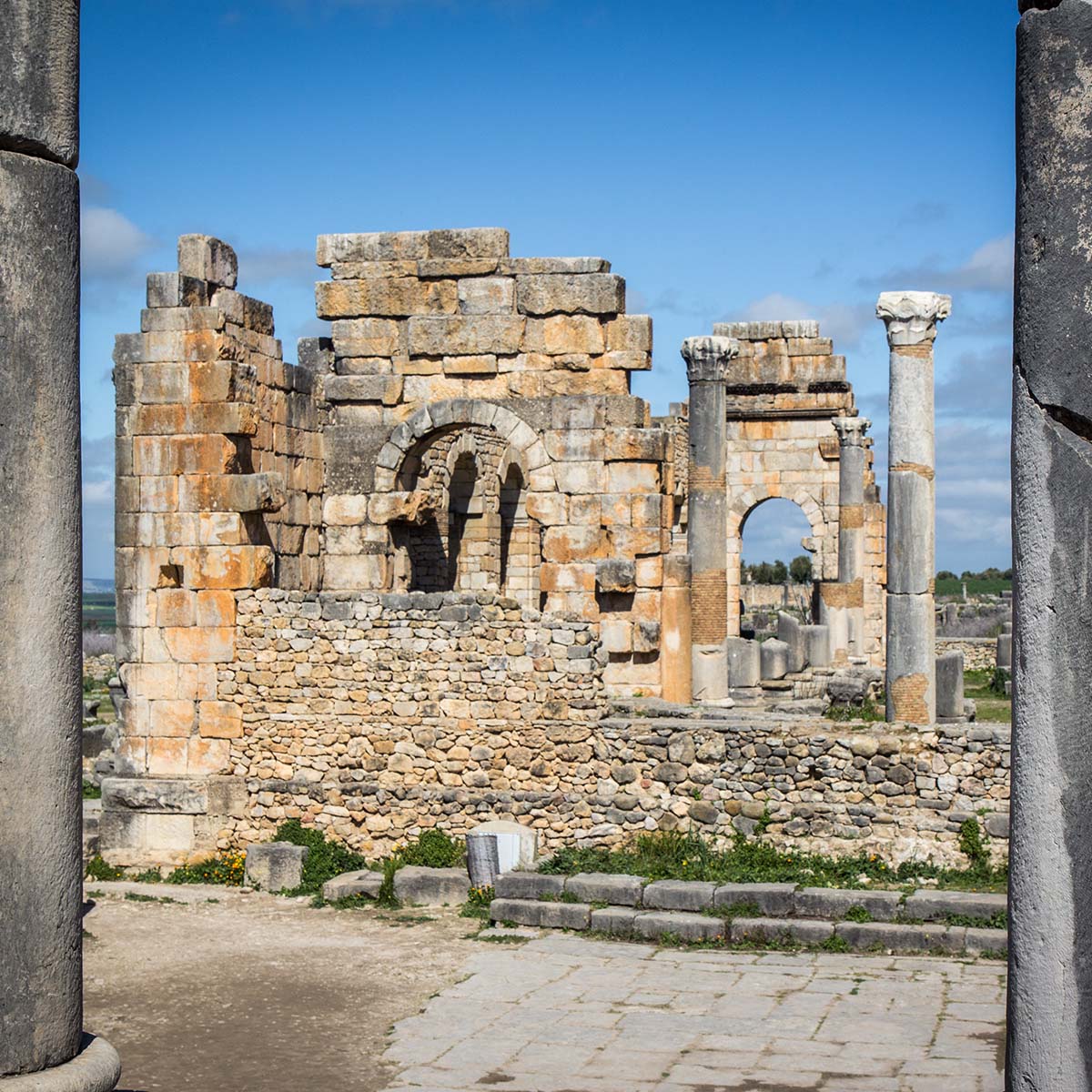
Visit Tips and Logistics
A. Transportation to Volubilis
Getting to Volubilis, the ancient Roman ruins in Morocco, is relatively easy, and a few transportation options are available. If you're coming from Meknes, you can take a taxi or a grand taxi, a shared taxi that can be more affordable. The journey takes about 30 minutes, depending on traffic conditions. Another option is to hire a private driver or join a guided tour from either Meknes or Fez. This can provide a more convenient and hassle-free experience, especially if you want to learn more about the history and significance of the site.
If you're coming from Fez, you can also take a grand taxi or hire a private driver. The journey from Fez takes around 90 minutes but can vary depending on traffic and road conditions. Public transport options from both cities may not be as frequent, so planning your trip accordingly is important.
When planning your visit to Volubilis, considering the entrance fee and opening hours is worth considering. The admission cost for adults is usually around 25 Moroccan Dirhams, and it's slightly cheaper for children and students. It's recommended to check the official website or contact the site directly for the most up-to-date information. The ruins are generally open from morning until evening, allowing ample time to explore the site at your own pace. If you prefer a guided experience, local guides are usually available for hire who can provide fascinating insights into the history and architecture of Volubilis.

1. Options from Meknes and Fez
If you're planning a visit to Volubilis, you'll be pleased to know several transportation options are available from Meknes and Fez. Here are some ideas to help you navigate your way to this ancient Roman ruin:
-
From Meknes:
- By car: The most convenient option is to rent a car and drive to Volubilis. It's a 30-minute drive from Meknes, and you can enjoy the scenic countryside.
- Taxis are also available by taxi and can take you directly to Volubilis. It's advisable to negotiate the fare beforehand to avoid any surprises.
- Private tours: Many tour operators in Meknes offer guided tours to Volubilis, which include transportation and a knowledgeable guide.
-
From Fez:
- By car: If you're travelling from Fez, it will take you approximately 1.5 to 2 hours to reach Volubilis by car. The route is well-maintained and offers beautiful landscapes.
- By public transport: Some buses run between Fez and Meknes regularly. From Meknes, you can follow the options mentioned above to reach Volubilis.
- Private tours: If you prefer a hassle-free experience, you can join a private tour from Fez that includes transportation and a guided visit to Volubilis.
Whichever transportation option you choose, be sure to check the operating hours of Volubilis and plan your visit
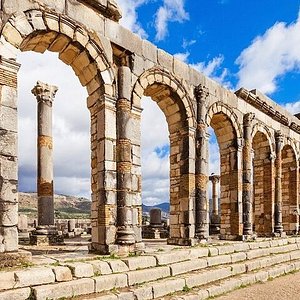
2. Public transport and private tours
When planning your visit to Volubilis, there are a few options to consider for transportation.
-
Public transport: If you're looking for a budget-friendly option, public transport is a convenient way to reach the ancient ruins. You can catch a bus from the nearby cities of Meknes and Fez that will take you directly to Volubilis. This is a great option for those who prefer to travel independently and explore at their own pace.
-
Private tours: For a more personalized and hassle-free experience, private tours are a fantastic choice. With a private tour, you'll have the convenience of a knowledgeable guide who can provide fascinating insights into the history and significance of Volubilis. These tours often include transportation to and from your hotel, allowing you to sit back and enjoy the journey.
Whether you choose public transport or a private tour, both options offer a convenient way to visit Volubilis and explore the ancient Roman ruins at your own pace. Consider your preferences and budget when deciding which transportation method suits you best.
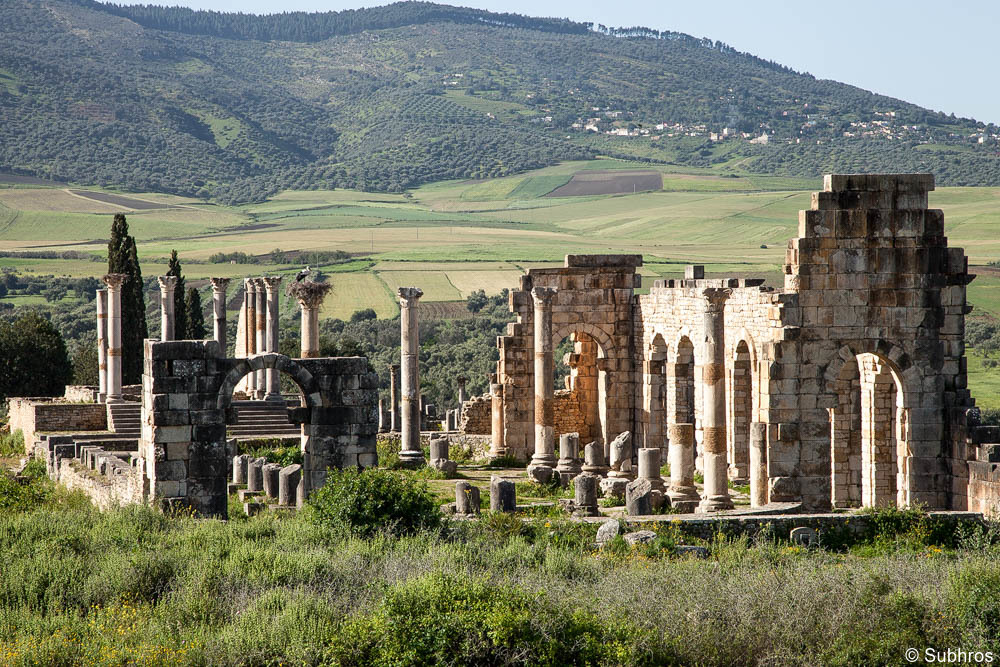
Entrance fee and opening hours
When planning your visit to Volubilis, knowing the entrance fee and opening hours is important to make the most of your trip. The admission cost to the ancient Roman ruins is approximately 25 Moroccan Dirhams (MAD), equivalent to around USD 2.50. This fee allows you to explore and experience the site's rich history and cultural significance.
Volubilis is open to visitors from 8:30 am until 6:30 pm, allowing ample time to explore and appreciate the ruins fully. It's advisable to arrive early to beat the crowds and have a more peaceful experience. Additionally, Tour guides are available at the entrance for hire, providing insightful information and stories about the ruins. If you prefer to explore at your own pace, detailed guidebooks and information boards provide historical context and explanations of the various structures within the site.
Whether you take public transport or a private tour, Volubilis is easily accessible from the nearby cities of Meknes and Fez. Public buses and taxis are reasonably priced, and private tours offer more flexibility and convenience. It's recommended to check the schedules and availability of these transportation options beforehand to plan your journey accordingly.
Knowing the entrance fee, opening hours, and transportation options for Volubilis will help ensure a smooth and enjoyable visit to this remarkable ancient Roman site in Morocco.
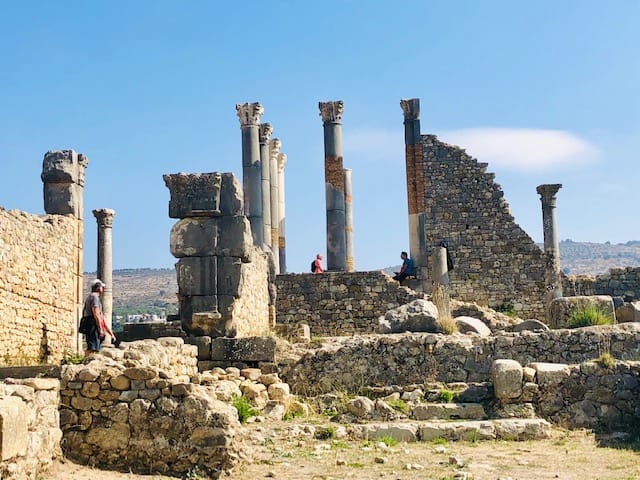
1. Admission cost
When planning your visit to Volubilis, it's important to consider the admission cost. Fortunately, exploring the ancient ruins won't break the bank. The adult entrance fee is usually around 30 Moroccan dirhams (MAD), roughly £2.50 or US$3. Children and students may enjoy discounted rates. It's always a good idea to carry some cash in local currency to pay for your ticket.
Additionally, if you're interested in hiring a guide to enhance your experience and provide valuable insights, there may be a separate fee for their services.
With such affordable admission prices, you can fully immerse yourself in Volubilis's rich history and captivating beauty without worrying about the cost.

2. Operating hours and availability of guides
When planning a visit to Volubilis, it is important to consider guides' operating hours and availability. The ancient Roman ruins are open to visitors daily from 9am to 6pm. This gives you ample time to explore the site and immerse yourself in its historical charm.
To enhance your experience, hiring a guide is highly recommended. They offer valuable insights into the history and significance of Volubilis, providing a deeper understanding of the ruins. Guides are available at the entrance for a separate fee. This allows you to make the most of your visit and learn about the fascinating stories behind each structure.
Don't miss the chance to uncover the secrets of Volubilis with a knowledgeable guide by your side.

Recommendations and Conclusion
The ideal time to visit Volubilis
When it comes to planning your visit to Volubilis, timing is everything. The ideal time to visit these ancient Roman ruins in Morocco is during the spring or fall seasons, specifically between March and May or September and November. This is when the weather is mild and pleasant, making it perfect for exploring the outdoor site without being overwhelmed by the heat or cold.
During these months, the temperature is typically between 15°C and 25°C (59°F and 77°F), allowing you to comfortably wander through the ruins and soak up the historical atmosphere. It's important to note that summers in Morocco can be scorching, with temperatures reaching up to 40°C (104°F) or more, which may make your visit less enjoyable.
Plan to make the most of your visit and arrive early or later in the afternoon to avoid crowds and the hottest parts of the day. This will give you ample time to explore the site at your own pace and take in the beauty and grandeur of ancient Roman architecture.
Furthermore, if you're interested in photography, the soft morning or evening light during the golden hours will provide the perfect backdrop for capturing stunning photos of the ruins.
The ideal time to visit Volubilis is during the spring or fall seasons when the weather is pleasant, and the crowds are manageable. By planning your visit accordingly, you'll have the opportunity to fully immerse yourself in the rich history and fascinating ruins of this ancient Roman site.
